Printed in the Spring 2025 issue of Quest magazine.
Citation: Savinainen, Antti, "Pekka Ervast: A Finnish Theosophist" Quest 113:2, pg 34-35
By Antti Savinainen
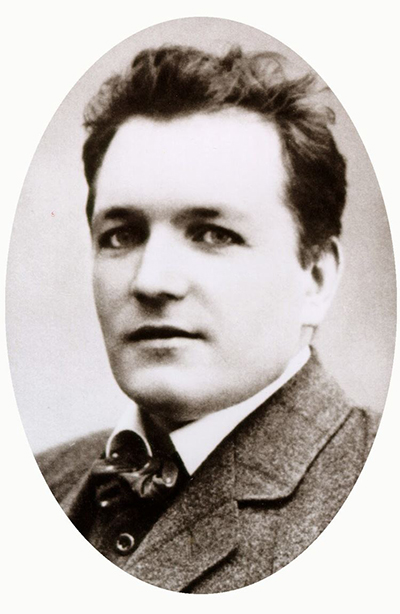 Pekka Ervast (1875‒1934) pioneered the Finnish Theosophical movement: he was the first general secretary of Finnish Theosophical Society from 1907 to 1917. His influence is still felt in Finland today.
Pekka Ervast (1875‒1934) pioneered the Finnish Theosophical movement: he was the first general secretary of Finnish Theosophical Society from 1907 to 1917. His influence is still felt in Finland today.
Ervast’s public activity lasted more than thirty years, and he was highly productive both as a writer and a speaker. He published more than seventy books during his lifetime, and today his published works number more than 140 volumes. Ervast gave more than 1,300 lectures and speeches. Consequently, he left a remarkable literary legacy that reveals the secrets of life and death to those who wish to delve into his teachings.
Spiritually awakened people do not necessarily reveal their own path to spiritual life and knowledge. For example, the great Austrian esotericist Rudolf Steiner wrote very little about himself in his unfinished autobiography, Mein Lebensgang. In Ervast’s case, the situation is different. He did not write his biography, but he talked and wrote about his life and spiritual experiences.
In this article, I will discuss the turning points in Ervast’s life that emerge from his biography. As my primary source, I will use Erik Gullman’s Truth Is the Highest Virtue: A Biography of Pekka Ervast (published in Finnish in 2020; the English translation is forthcoming in 2025). This article presents Ervast’s teachings only in passing; for the interested reader, The Essential Pekka Ervast (2024) outlines his Theosophical insights.
The Early Years and Finding Theosophy
Ervast was born on December 26, 1875 as the first child in his family; later he had two siblings. His mother’s religious upbringing was simple, based on God’s goodness and omnipresence: her image of God could be described as pantheistic.
The first major turning point in Pekka’s life came in 1884, when his mother, Hilma, died at age thirty-seven, when he was eight years old. Although her death was a great loss for him, he had a comforting dream of meeting her in paradise. The dream comforted him, for he felt he had received a guardian angel from his mother.
Ervast was very talented with languages. His native language was Swedish (there is still a Swedish-speaking minority in Finland). However, he learned to read and write French before Swedish at age five or six from an old French textbook at home. At the age of twelve, he wrote a comparative grammar in nine languages. Moreover, he wrote his first novel at thirteen and dreamed of becoming an author.
As a young man, Ervast could not see injustice without getting angry. This fear of getting angry plagued him for many years until, at the age of fourteen, during one of his fits of anger, he heard a voice saying, “You must not get angry, you must not get angry; just be true to yourself, be noble and good.” Ervast later recalled:
It was such a suggestive voice, such a powerful influence, that I must say that there is no question of my ever getting angry in the next ten years. Though I used to be overcome with anger, now I could perfectly control myself so that I was not in any way in my heart angry, not outwardly, but quite able to control myself, and it was only because I felt such great joy at once when that wonderful voice had told me never to be angry.
Ervast began his university studies in Helsinki in the autumn of 1893. He studied linguistics, the history of the Romance languages, and Renaissance literature. A serious yearning for the truth awakened in him: “I was in terrible pain because I thought I was looking for the truth, and I had to find out what this life was . . . Otherwise, there was no point in existing.”
The ready-made answers provided by society and Ervast’s relatives did not satisfy his thirst for truth. For a while, he thought that there was no meaning to life and that materialism was the right philosophy. This phase was temporary. Although it liberated him from the teachings of rigid mainstream Christianity, it did not answer the problem of consciousness.
In December 1893, Ervast was confirmed in the state-sponsored Evangelical (Lutheran) church and went to confession. (At the time, virtually everyone in Finland had to belong to a Christian church). During the ceremony, he had an experience that calmed his mind: he saw Jesus’s face and half of his body in the form of a living being with deep, gentle eyes looking directly at him. That gaze enabled him to free himself from the atmosphere created by the church and became increasingly aware of himself—not the old self, but something new.
Soon after going to confession, Ervast was visited by a fellow student, who told him about Theosophy. He was immediately interested and borrowed A.P. Sinnett’s books The Occult Word and Esoteric Buddhism, which spoke of a Brotherhood of adepts and explained how there have been, and still are, people who have a deeper knowledge of the mysteries of nature and life than any scientist. He was overcome with such a tremor of joy that he could read no further. Ervast joined the Scandinavian Section of the Theosophical Society the following year, in 1895.
The books and life of the great Russian novelist Leo Tolstoy also helped Ervast. Through Tolstoy, he discovered the commandments of the Sermon on the Mount. Ervast felt “that Christianity knew nothing about Jesus Christ.”
Ervast fell in love at age twenty, intending to marry a girl from St. Petersburg. The feelings were mutual, but the relationship had no future.
The Regeneration Experience
On October 13, 1896, Ervast’s intense search for the truth reached the point where he cried out to Life for help. As his biographer Erik Gullman writes:
Everything was suddenly covered in fog. Before Pekka’s eyes was something like a dark cloud, into which he felt his pain moving. He thought he was dying for a moment and thought: “Is this what life is like?” At the same moment, the cloud burst as if struck by lightning, and the sun’s rays shone on Pekka’s face, “warming and bright, but not dazzling.” Gradually, the light, which seemed wonderful, enveloped Pekka on all sides, so that he was like a sea of light. At last, it penetrated him, filling and illuminating him completely so that he and his whole being were “like a bare light.”
This regeneration or rebirth experience was a pivotal experience in Ervast’s life. He saw God’s infinity, the Great Life behind everything. He also noticed that every person had a little speck of light within, although certain hindrances in their souls prevented this dim light from becoming brighter.
A couple of months later, Ervast had an experience in the invisible world that convinced him that he had received a mission from his Master to spread the Theosophical understanding of life. In 1898, he abandoned his university studies and dedicated his life entirely to Theosophical work.
A Crisis in Theosophy
After H.P. Blavatsky’s death in 1891, the Theosophical Society entered a crisis. W.Q. Judge and Annie Besant got into a public dispute on certain issues related to the Masters, leading to a split in the Society.
The quarrels and divisions saddened Ervast. He joined Judge’s branch of the Theosophical Society and its Esoteric School. During that time, he lived an intense spiritual life, striving and exerting himself with all the strength of his soul and heart and attaining much spiritually. According to Ervast’s testimony, he learned to move consciously within the invisible world and help the deceased in kamaloka. His teachings on the afterlife are available in English (Marjanen et al., 2017), so an interested reader can decide to what extent this statement is credible.
Ervast’s membership in Judge’s Theosophical Society was short-lived. Judge died in 1896, and his branch of the movement was reorganized by Katherine Tingley. Not wishing to be associated with Tingley’s TS, Ervast returned to the Adyar Theosophical Society, where H.S. Olcott was still in charge as president. Ervast met Olcott in Stockholm in 1900 and translated his speeches into Swedish. Ervast had an impression that Olcott brought something of Blavatsky’s aura.
The Great Strike and Finland’s Independence
Ervast lived intensely in the difficult times before Finland’s independence. The nation had been part of Sweden for centuries, then, starting in 1809, an autonomous state within the Russian Empire. However, in 1899 the Russian Tsar Nicholas II started a campaign to limit the special status of the Grand Duchy of Finland and possibly terminate its political autonomy.
Finland resisted Russian repression with a major strike in 1905. Ervast likened the nonviolent great strike to “the meditation of the human individual” when “everything had come to a standstill, not only outwardly but also in people’s souls.” Afterward, it was clear to him that Finland would become independent politically. He felt “that if Finland could adopt a truly spiritual viewpoint on violence, we would soon be free from all foreign domination and create a paradise in Finland.” After the great strike, Ervast’s Theosophical work became more self-conscious and was always aimed at the freedom and happiness of the Finnish people.
According to Ervast, Finland’s independence had been decided in advance by a “council of gods.” Ervast predicted that independence would come in 1915, but it did not, and Ervast corrected his prediction by two years. Indeed Finland became independent in 1917.
The Esoteric School of Jesus and The Key to the Kalevala
The Esoteric School of Jesus (in its English edition, The Divine Seed), was published in 1915. It presents Ervast’s practical ethical and meditation instructions on esoteric Christianity. This work was supplemented by a treatise on the Sermon on the Mount in 1925 (the English version appeared in 1933). Many regard The Esoteric School of Jesus as Ervast’s most important book and one worth returning to again and again. It is based on his own spiritual experiences and observations.
The Key to the Kalevala, published in 1916, is another notable work by Ervast. In it he describes the esoteric message contained in The Kalevala, the Finnish national epic, assembled from folk material by Elias Lönnrot and first published in 1835. In his book, Ervast writes more occultly abut the path of spiritual development than in any other book or public presentation. He presents the two main stages of the spiritual path: the preparatory path of purification and the actual path of acquiring occult knowledge, which is interpreted from the point of view of the etheric body and the chakras. Perhaps the most essential theme in Ervast’s interpretation of The Kalevala is that its heroes are on a quest for the Sampo, a mysterious artifact representing, among other things, the eternal wisdom possessed by the Great White Brotherhood.
Separation from the Theosophical Society
In the 1910s, Ervast began to see that the international leadership of the Adyar Theosophical Society had a very different view from his own. Ervast did not accept the presentation of the new TS president, Annie Besant, and C.W. Leadbeater of Jiddu Krishnamurti as the future incarnation of the World Teacher, especially when this was presented as the second coming of Christ to earth. Both Ervast and Rudolf Steiner considered the return of Jesus Christ in Krishnamurti impossible: indeed this issue was a central reason for Steiner’s resignation from the Theosophical Society in 1912.
The outbreak of the First World War in 1914 revealed another important difference: the TS leadership argued that England and its allies were fighting for the forces of light and Germany and its allies for the forces of darkness. But from his own spiritual experience, Ervast contended that the Great White Brotherhood would not wage war against any country.
Still, these differences in opinion did not persuade Ervast to resign from the TS. In effect, there were two factions in the Finnish Theosophical Society: one that was aligned with Besant and Leadbeater in Adyar and another, which supported Ervast’s work. Ervast’s supporters saw Theosophical work as esoteric self-education and human enlightenment, whereas Besant’s supporters thought that Theosophical work should have a more direct impact on social issues. Moreover, many in Besant’s faction of the Finnish TS expected (and were more or less obliged to expect) the coming of a new World Teacher and prepared to do preparatory work for this end within the Order of the Star in the East.
Ultimately, this expectation proved futile: in 1929, Krishnamurti dissolved the Order of the Star in the East, denying that he was or would be the World Teacher, and left the Theosophical Society.
By then, the split in the Finnish Theosophical Society had long been accomplished. Ervast founded the Ruusu-Risti (the Finnish Rosy Cross) on November 14, 1920. Ervast, who had corresponded with Besant over the years, invited her to become an honorary member of Ruusu-Risti. There is no evidence that she accepted.
The Esoteric School
From 1921 to 1922, a contemplation group operated in Helsinki. This group was the first seed and germ of Ruusu-Risti’s Esoteric School. Ervast likened the group’s meditation work to a temple, which required many workers to build. Every member of Ruusu-Risti who had been solemnly received at the annual meeting could aspire to become a builder of that invisible temple. To become a member of the Esoteric School, the aspirant was to write a letter to Ervast in either January or July, stating their desire, motives, and understanding of the purpose of the Esoteric School and its work. Ervast guided the students in the Esoteric School on meditation and the steps to take on the spiritual path. He emphasized that he was not the teacher but a gatekeeper and servant.
After Ervast died in 1934, the Esoteric School was disbanded, since no one could replace him in guiding such a school. The instructional letters Ervast sent to Esoteric School students were published after his passing.
The Masonic Brotherhood of the Rosy Cross
Many members of the Theosophical Society had joined Le Droit Humain, an international association of Freemasons based in Paris that was open to men and women alike (a movement often known as Co-Masonry). In 1920, when Ervast still belonged to the Theosophical Society, he was asked to establish the Society of Freemasons in Finland. At first, he was not enthusiastic about Freemasonry, but he noticed that TS lodge meetings without forms could easily come to seem spiritless. Ervast changed his mind when he was helped to realize that Freemasonry could be dedicated to the work of esoteric Christianity, even though the symbols and allegories of Freemasonry are generally taken from the Old Testament.
In 1925, Ervast wrote a book, The Lost Word (not available in English), in which he set out a program for reforming Freemasonry. Ervast also made specific changes to Masonic ceremonies. These were initially well received by the Supreme Council of Le Droit Humain in Paris, but some Co-Masons in Finland opposed Ervast’s proposal. Ervast was accused of introducing Theosophy into Freemasonry. In 1927, he resigned from Le Droit Humain and founded the independent Masonic Brotherhood of the Rosy Cross, an organization that continues to this day.
The Great Adventure
Ervast traveled to the United States in the autumn of 1933. He said about his trip to America, “So I have this idea—which many might think is crazy and fantastic—that I would like to go and see an old friend to negotiate with him, first of all about the church, but generally about the reformation that will take place.”
According to Ervast, Martin Luther’s Reformation in the sixteenth century was inspired by a high Rosicrucianism, but it was unfinished. Ervast said that the churches would become superfluous for humanity if they did not want to participate in the new Reformation, which would be primarily doctrinal. The doctrine of eternal damnation (a doctrine that Ervast believed has caused immense suffering both in this life and the afterlife) and the true nature of Christianity will be central issues.
Ervast wrote the novel The Great Adventure (not translated into English) during his stay at the Theosophical center in Ojai, California. In the book, he outlines the contours of a new Reformation. He called it his “swan song.” Ervast died on May 22, 1934, soon after his return from America.
The final scene of The Great Adventure features Professor Batory, a Master of esoteric Christianity, and Dr. Ensio Kotka, who is Ervast’s alter ego:
The professor pronounced in a natural but solemn voice:
“Ensio Kotka, you know who I am, and you know, or at least you have an idea, who you are. We shall not mention names. However, you are my friend and colleague. Can I trust you?
My eyes watered. I looked up.
“Now and always,” I whispered.
The professor held out his hand, and I squeezed it.
“We are both servants of Jesus Christ,” he said.
We stood up simultaneously and raised our eyes to the ceiling. Was it a hallucination? But I saw a group of angels, and in the midst of them, the gentle face of Christ.
Acknowledgments
I thank Jouni Marjanen and Erik Gullman for their helpful comments on this article.
Sources
Ervast, Pekka. The Divine Seed: The Esoteric Teachings of Jesus. Wheaton, Ill.: Quest, 2010.
———. The Essential Pekka Ervast: An Introduction to Teachings of the Finnish Rosicrucian Theosophist. Edited by Antti Savinainen, Rauno Rinkinen, and Matti Koskinen. Helsinki: Literary Society of the Finnish Rosy Cross, 2024.
———. From Death to Rebirth: Teachings of the Finnish Sage Pekka Ervast. Edited by Jouni Marjanen, Antti Savinainen, and Jouko Sorvali. Helsinki: Literary Society of the Finnish Rosy Cross, 2022. E-book: https://www.theosophy.world/resource/ebooks/death-rebirth-pekka-ervast.
———. The Key to the Kalevala. Translated by Tapio Joensuu et al. Nevada City, Calif.: Blue Dolphin, 1998. The e-book version was published in 2018 by the Literary Society of the Finnish Rosy Cross. Available online at http://media.pekkaervast.net/books_files/pekka_ervast_-_the_key_to_the_kalevala.pdf.
———. The Sermon on the Mount, or the Key to Christianity. London: Theosophical Publishing House, 1933. Available online at http://media.pekkaervast.net/books_files/The_Sermon_on_the_Mount_or_The_Key_to_Christianity.pdf.
Gullman, Erik. Truth Is the Highest Virtue: A Biography of Pekka Ervast. Edited by Jouni Marjanen. Translated by Matti Koskinen and Antti Savinainen. Helsinki: Literary Society of the Finnish Rosy Cross, 2025.
Antti Savinainen, PhD, is a Finnish high-school physics instructor who teaches both the Finnish national syllabus and for the international baccalaureate. He writes regularly on Theosophical and Anthroposophical themes, both in Finnish and English. He has been a member of the Finnish Rosy Cross, a part of the Finnish Theosophical movement, for over three decades. He is also the editor in chief of Ruusu-Risti magazine. His article “Rudolf Steiner on Karma” appeared in Quest, spring 2024.
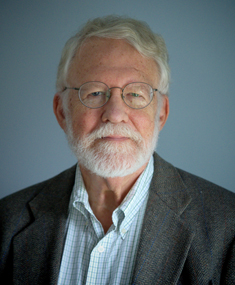 This issue of Quest magazine is devoted to the theme of daimons and spirit guides. What images are conjured up when we contemplate this topic! Descriptions and renderings of these entities go back to our earliest history, and likely long before. Archangels, guiding angels, guardian angels, ascended ancestors, power animals, and many other energies are purported to give spiritual guidance. How can we know if such entities exist?
This issue of Quest magazine is devoted to the theme of daimons and spirit guides. What images are conjured up when we contemplate this topic! Descriptions and renderings of these entities go back to our earliest history, and likely long before. Archangels, guiding angels, guardian angels, ascended ancestors, power animals, and many other energies are purported to give spiritual guidance. How can we know if such entities exist?

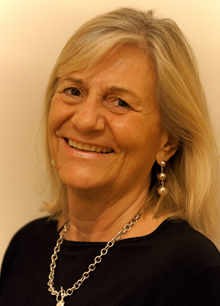 Growing up in a Catholic country where religious education in school was mandatory, I was taught that demons are the fallen angels who followed Satan and rebelled against God. Later in life I learned that the term demon is derived from the Greek word daimon, which means supernatural being or spirit.
Growing up in a Catholic country where religious education in school was mandatory, I was taught that demons are the fallen angels who followed Satan and rebelled against God. Later in life I learned that the term demon is derived from the Greek word daimon, which means supernatural being or spirit.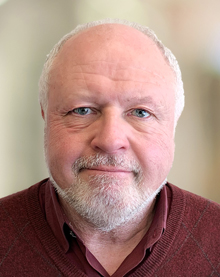 Daimon is a curious term. Although it has nothing to do with demon as used in present-day speech, it is the source of that word. In ancient Greek (which is where our word comes from), daimon refers to divine power in an abstract, impersonal sense as opposed to theos, which means god in a personal sense.
Daimon is a curious term. Although it has nothing to do with demon as used in present-day speech, it is the source of that word. In ancient Greek (which is where our word comes from), daimon refers to divine power in an abstract, impersonal sense as opposed to theos, which means god in a personal sense. Pekka Ervast (1875‒1934) pioneered the Finnish Theosophical movement: he was the first general secretary of Finnish Theosophical Society from 1907 to 1917. His influence is still felt in Finland today.
Pekka Ervast (1875‒1934) pioneered the Finnish Theosophical movement: he was the first general secretary of Finnish Theosophical Society from 1907 to 1917. His influence is still felt in Finland today.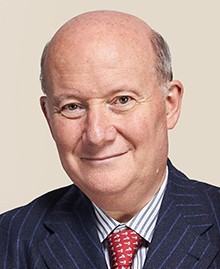 Piet Mondrian (1872–1944) joined the Theosophical Society on May 14, 1909. Early interpreters minimized its influence on the Dutch painter, with Yve-Alain Bois in 1990 claiming that “the Theosophical nonsense with which the artist’s mind was momentarily encumbered” quickly vanished from his work.
Piet Mondrian (1872–1944) joined the Theosophical Society on May 14, 1909. Early interpreters minimized its influence on the Dutch painter, with Yve-Alain Bois in 1990 claiming that “the Theosophical nonsense with which the artist’s mind was momentarily encumbered” quickly vanished from his work.